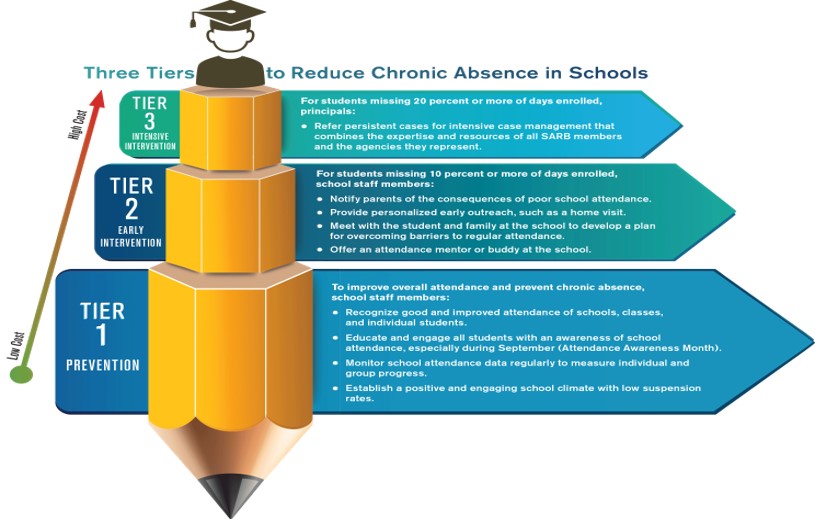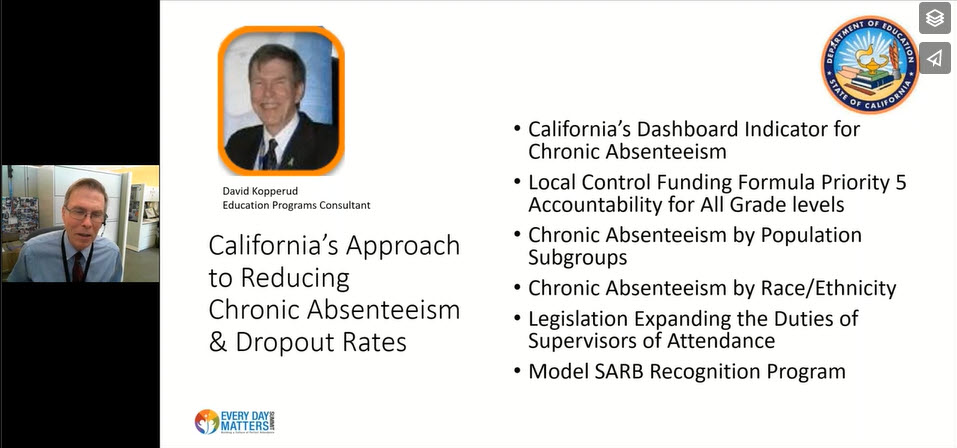The Longstanding Problem of Chronic Absenteeism
Since the start of compulsory education in the US, absenteeism has been a problem, one that educators recognize as among the most persistent and critical challenges schools experience in the country (Gottfried & Hutt, 2019). However, it was not until 2016 that the US Department of Education published a report that created awareness of chronic absenteeism as a critical issue (U.S. Department of Education, 2016).
All over the US, over 8 million students are chronically absent from schools and hence are academically at-risk. Chronic absence implies missing 10 percent or more of school days by students due to excused, unexcused absences and suspensions, and transformed themselves into third-graders who are unable to master reading; the sixth-graders failing in subjects and the ninth-graders dropping out from high schools. Research has shown that chronic absenteeism can impact academic performance in later grades and is a key early warning sign that the students are more likely to drop out of high school (Balfanz & Byrnes, 2012).
Detailing California’s Approach
The RaaWee K12 EVERY DAY MATTERS SUMMIT, February 20, 2020, welcomed David Kopperud, Education Program Consultant at the CA Department of Education for a discussion of California’s Approach to Reducing Chronic Absenteeism & Dropout Rates. At this event, he shared the California strategies with 100 education leaders from more than 50 public school districts nationwide. View the entire conversation at California’s Approach to Reducing Chronic Absenteeism & Dropout Rates – Every Day Matters Summit – 2.20.2020.
According to David Kopperud on chronic absenteeism, “You have kids with health problems and mental health problems; you have young children who are missing school for no fault of their own.” He further stated: Schools with high poverty levels tend to have higher rates of chronic absenteeism, and “one of the best ways we can address poverty is by figuring out what can we do to help these students get to school despite lack of transportation, health issues, trauma, and anxiety.”
The data released by education officials in California in 2017 showed that 10% of students in the state were chronically absent. As a result of the findings, California dramatically shifted its approach to school-absence away from punishing absenteeism, or unexcused absences, towards the identification of the rationales for all absences and offering support. This approach has been defined in a three-tier strategy for Prevention, Early Intervention, and Intensive Intervention.
The data also shows that 25% of foster children were chronically absent in the same year, in addition20% of students were of Native Americans and African-American origin. Mr. Kopperud emphasized their obvious need to monitor and address chronic absenteeism by Sub-Group, using more targeted services and resources.
Three Tiers (MTSS) to Reduce Chronic Absenteeism in California

- Prevention – Tier 1 focuses on ongoing Recognition/Reinforcement, broad Awareness, diligent Monitoring, and positive welcoming School Climate. It is intended to improve overall attendance and prevent chronic absence.
- Early Intervention – Tier 2, designed to address the needs of students missing 10% or more of school days, begin notifications, meetings, and services to students and guardians.
- Missing 20% or more of school days triggers Intensive Intervention – Tier 3. These interventions target repeat offenders with the expertise, services, and resources of all SARB collaborative stakeholders and their respective agencies.
Check out more information on California’s approach to:
- Chronic Absenteeism – Attendance Improvement (CA Dept of Education)
- Dropout Prevention – Attendance Improvement (CA Dept of Education)
California SARB (School Attendance Review Board)
The School Attendance Review Board (SARB) is key to the California approach to reducing chronic absenteeism. Mandated by legislation, SARBs are comprised of stakeholders representing the various district and community services and resources for the chronically absent student and their family. School Attendance Review Board Handbook provides additional detail.
In California, SARBs are district-level teams that are composed of school and community members who meet regularly to diagnose and resolve persistent school attendance or behavior problems. The Model SARB Program identifies outstanding results-based school attendance improvement programs that provide comprehensive services to high-risk youth with school attendance or school behavior problems.
The State SARB makes recommendations to the State Superintendent for reducing chronic absenteeism rates and dropout rates in the state’s public schools. As part of its mandate, the State SARB makes annual recommendations regarding the needs of high-risk youth. The most recent recommendations include the following four improvements:
- Develop Local Control Accountability Plan (LCAP) strategies for Groups with higher Chronic Absenteeism rates – again emphasizing the unique needs and resources by Sub-Group.
- Mandate small districts to obtain certification for their supervisors of attendance. This has not been previously required of smaller districts with personnel often “wearing many hats” within their district but has proven necessary for broader success.
- Mandate kindergarten attendance starting at enrollment.
- Advocate for the inclusion of grades 9-12 on the California School Dashboard, which is currently focused on elementary and middle grades.
The California Model SARB Recognition Program identifies and recognizes innovative results-based school attendance improvement programs at different levels. The programs serve as models for other SARBs across the state of California. The goal of California SARB is to reduce chronic absenteeism rate by 1% annually. Get full detail on the California Model SARB Recognition Program.

About the Presenter
As the education programs consultant for Child Welfare and Attendance at California Department of Education (CDE), David Kopperud is the chairperson of the State School Attendance Review Board (State SARB) and the director of the CDE’s Model SARB Recognition Program.
A former English teacher, he first became interested in child welfare and attendance after noticing a large number of students who were not attending his classes. After working as coordinator of Child Welfare and Attendance in the Hemet Unified School District, he served as Child Welfare and Attendance Administrator and Director of Personnel and Pupil Services at Washington Unified School District before coming to work at the CDE.
David Kopperud, Education Programs Consultant
California Dept of Education
916.323.1028
cwa@cde.ca.gov
References
Balfanz, R., & Byrnes, V. (2012). Chronic Absenteeism: Summarizing What We Know From Nationally Available Data. Baltimore; Johns Hopkins University Center for Social Organization of Schools), 9. http://new.every1graduates.org/wp-content/uploads/2012/05/FINALChronicAbsenteeismReport_May16.pdf
Gottfried, M.A., & Hutt, E.L. (Eds.) (2019). Introduction to Absent from School: Understanding and Addressing Student Absenteeism. Cambridge, MA: Harvard Education Press. https://www.hepg.org/hep-home/books/absent-from-school
U.S. Department of Education (2016). Chronic Absenteeism in the Nation’s Schools: A Hidden Educational Crisis. Washington, DC. https://www2.ed.gov/datastory/chronicabsenteeism.html





